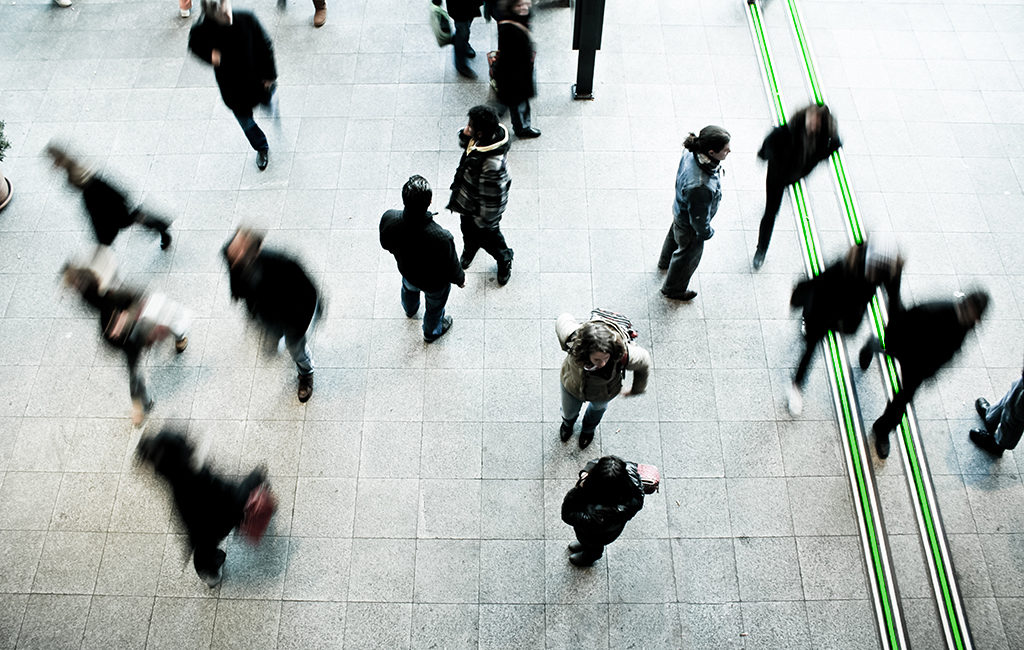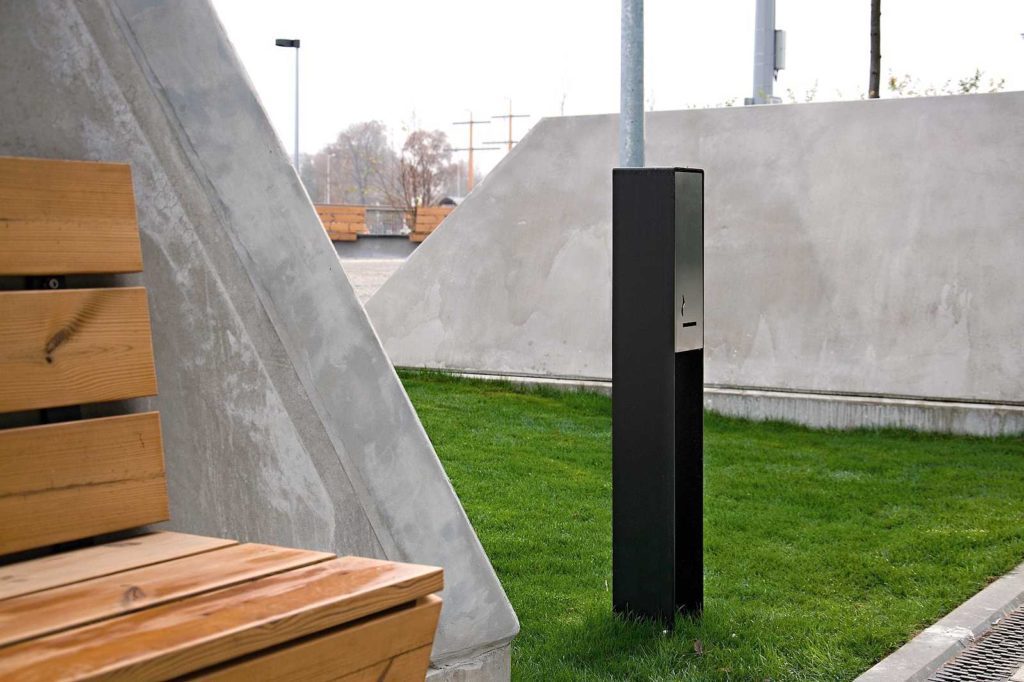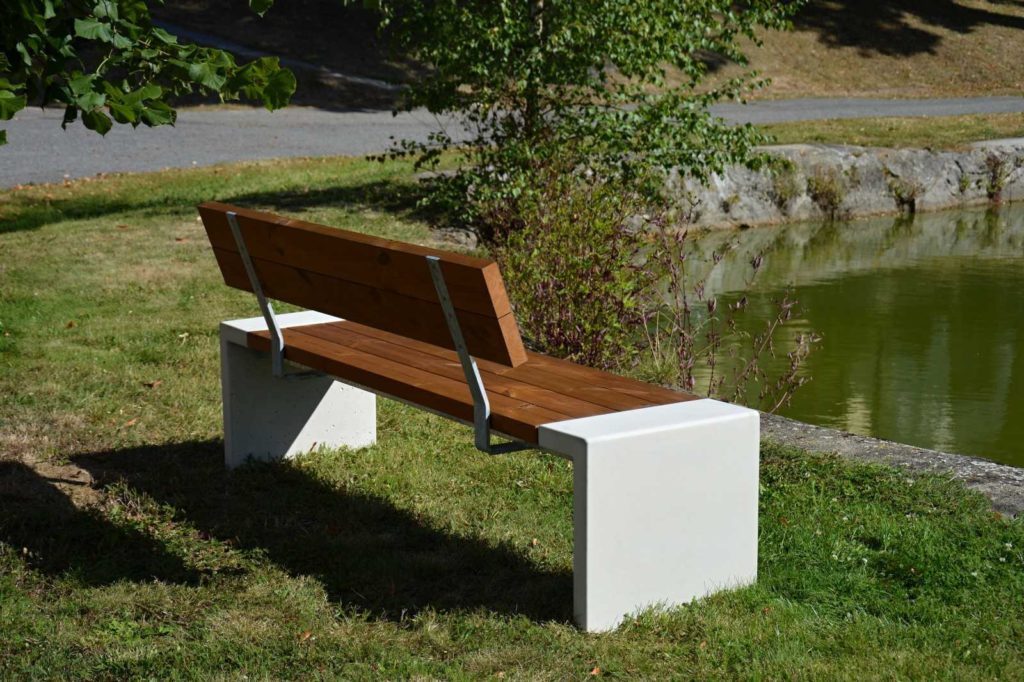
How to make urban spaces as convenient as possible for the residents? One way to achieve this is through well-chosen urban furniture that takes the needs of the residents into account and is based on the function of the specific street or area. Based on the density of traffic, urban space can be divided into four categories: larger streets with intense traffic, cycle and pedestrian tracks, streets for everyday movement with a lower traffic density along with the surroundings of public buildings, and spaces between them that allow stopping for a longer period. Furniture should be planned in accordance with the function of the specific street or area and the speed with which people pass it by. Correctly chosen furniture provides wellbeing, cleanliness, and safety at the same time, which makes the urban space more convenient for residents across all age groups.
Larger streets with intense traffic, i.e. the main roads
Traffic density and speed on larger streets with intense traffic is very high. These streets are used by cars and public transport as well as numerous pedestrians and cyclists. In addition to local traffic, these streets for travelling between city districts. However, the safety and comfort of all people must still be ensured.
A pedestrian walking on these streets is not looking for a bench or seating area for a longer stay, but a spot to take a short break, rest their feet, wait for a bus, etc. For this reason, main roads do not need long benches or cosy seating areas, but benches for waiting, litter bins, and bollards must be planned along larger streets.
Bollards are practical partitions which enable creating a safe space for cars, cyclists, and pedestrians at the same time. Lighted bollards, such as the bollard Dalia, are particularly practical for use in darker spots where there is not enough street lighting. Lighted bollards add additional security and also provide an impressive addition to ordinary lighting solutions.
When choosing benches for a street with intense traffic, a simple and functional style should be preferred. An example of such a bench is the park bench City, which, with its modern design, is suitable for placing along streets as well as at bus stops. The bench is made of weather-proof steel and is therefore durable.
Neither litter bins nor ashtrays along main streets should be forgotten and preferably, these should be stand-alone and have an unobtrusive design so that they would remain neutral in the city scene. When choosing both litter bins and ashtrays, solutions that can be emptied easily should be preferred.

Cycle and pedestrian tracks
Cycle and pedestrian tracks are popular among both cyclists and fitness enthusiasts. They are also used by many families with children who are looking for an opportunity to spend time with their children away from the roads. Cycle and pedestrian tracks do not require planning large rest areas, but still, spots that enable resting and catching one’s breath for a moment should be taken into consideration.
In order to separate the road and the cycle and pedestrian track, it is reasonable to install bollards at the beginning of the track so that the cycle and pedestrian track would not be accessible by car. A lighted bollard such as the bollard Lis is excellent for marking a cycle and pedestrian track also in the modern urban space, as it looks more like a light than a barrier, thereby adding elegance to the urban space. Bollards are particularly necessary in places where there is no other separation between the road and the cycle and pedestrian track. This way, it is clear for both drivers and those moving along the cycle and pedestrian track where one or the other should be.
Another option for separating a road and a cycle and pedestrian track is to use a fence, which may be either traditional or have an eye-catching design, such as the fence Protector, which does not look as strict as a barrier with a straight design.
Benches installed next to cycle and pedestrian tracks should be placed in spots where stopping is safe. Thinking of cyclists using the tracks, it would not be purposeful to place a bench, for example, on a sharp turn where a cyclist cannot see it easily. Wherever possible, the bench should be faced towards the sun and a beautiful view. Next to a cycle and pedestrian track, it is practical to choose benches that also have a bicycle stand. For example, the bench Segmo combines a bicycle holder and a seating area while being very compact. Thanks to a circular design, it is also very easy to connect it to landscaping elements, for example, by planting a decorative tree in the centre of the bench. Timeless design makes it possible to install this bench both in the modern urban environment and also near historic buildings.

Streets for everyday movement and surroundings of public buildings
Streets for everyday movement take us from point A to point B. These are the streets that the residents use to go to the store, school, work, etc. If park areas are farther away, these streets are also used to spend free time – people come here to take walks, spend time with children, and walk their dogs. All of them should be taken into consideration when planning city furniture on such streets.
For example, the park benches and chairs of the Oslo product line have a comfortable seating area and support both the back and arms of the person sitting, so they are perfect for the streets used for everyday movements. Oslo-type chairs are suitable for catching one’s breath for a moment as well as for a longer break, reading a book, or eating outdoors – why not?
Usually, the developer of the building is responsible for the greenery around public buildings and the outdoor furniture placed there. Often, however, not enough attention is placed on the outdoor furniture, which is why these areas do not provide enough options for residents to rest and stop. Here, city planners should certainly cooperate more with the developers so that the whole urban space would be complete and convenient. One option for making the surroundings of public buildings more comfortable would be to combine benches and tables. The Sibelo table with the Sibela park bench is an eye-catching example of this, as when combined, they enable creating a space where people can, in addition to resting, also work in the public space or even hold larger meetings.

The spaces between
Every urban space needs recreation zones and spaces for longer stops, where it would be nice and convenient for all residents to spend time in fresh air. Recreation areas should not be limited to only parks, but also be on street corners and small green zones between buildings, which are attractive gathering sports particularly for the residents of the area. People come here to play with their children and talk to their neighbours. When planning furniture for these areas, the needs of the locals must be the priority, whereas the area should be equally attractive to families with children and retired people.
The benches placed there should be as comfortable as possible, as is, for example, the park bench Borola, which supports the whole body, while its waved silhouette and wooden details make it blend into the greenery. There should also be some privacy and separation from the surrounding apartment buildings and streets. One option for this is using plant containers such as Peta, which combine wood and metal in the same style as the Borola bench. Peta plant containers can be ordered with different measurements and sides made of solid wood or hot-dip galvanised and powder-coated metal.
To the green zones between buildings, an attractive playground for the youngest residents and an outdoor gym for the older ones should also be planned – this way, the green zone provides activity for all.

A well-thought-out urban space breathes in unison with the residents, enables stopping when and where needed, and offers different ways to spend free time thanks to the outdoor furniture installed there. Furniture should be chosen based on whether the speed of movement in the specific area is very quick, rather quick, rather slow, or very slow. In addition to taking the speed of movement into account, it is important to consider the placement of the furniture when choosing the outdoor furniture. If possible, the furniture should always be placed facing towards the sun and a nice view. The placement of litter bins and benches should be planned so that the litter bin would not be inconveniently near to the bench. Evaluating quality is also necessary in the choice of outdoor furniture, so that the furniture’s service life would be as long as possible.
Read more about choosing outdoor furniture from the article “What to consider when choosing outdoor furniture?”